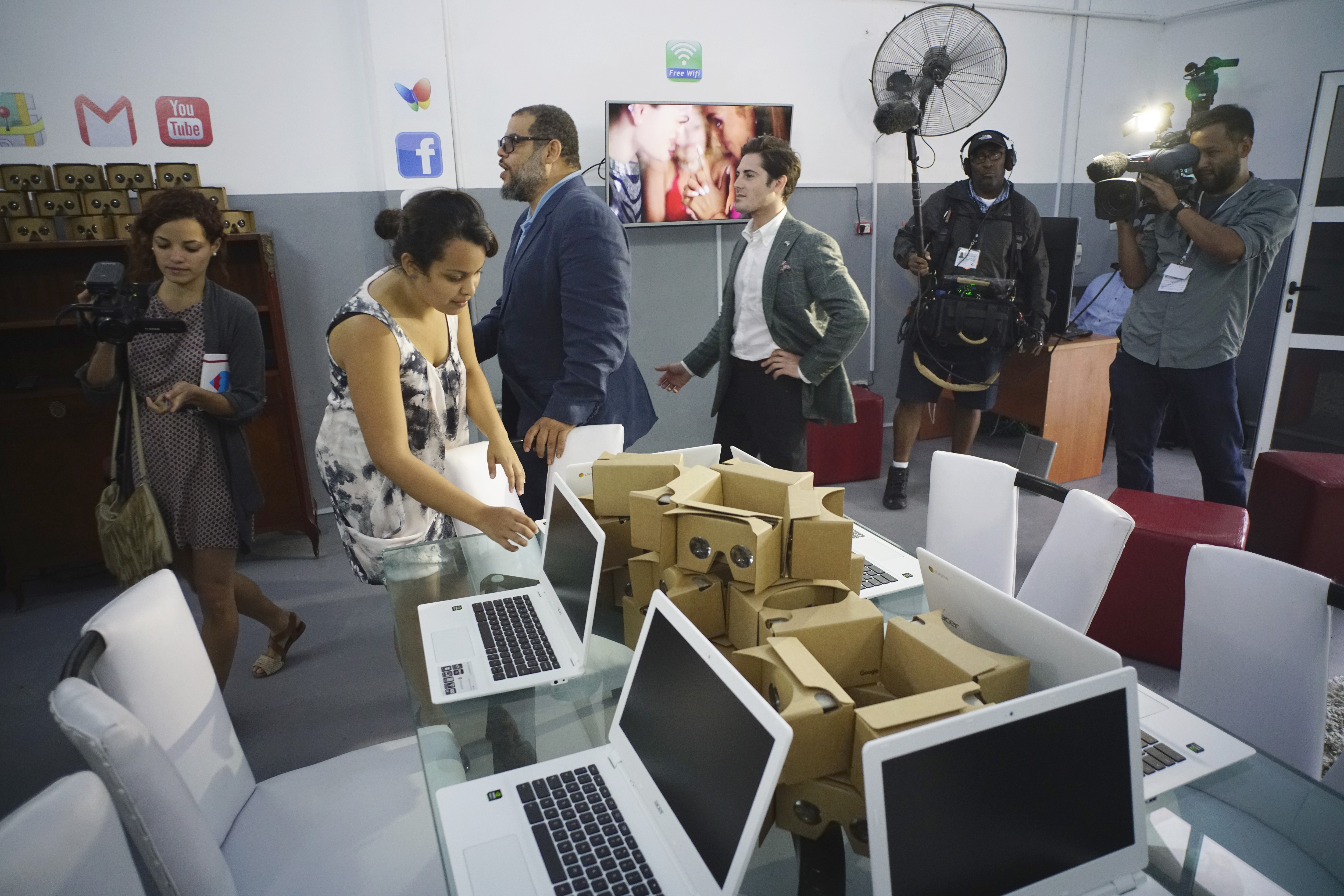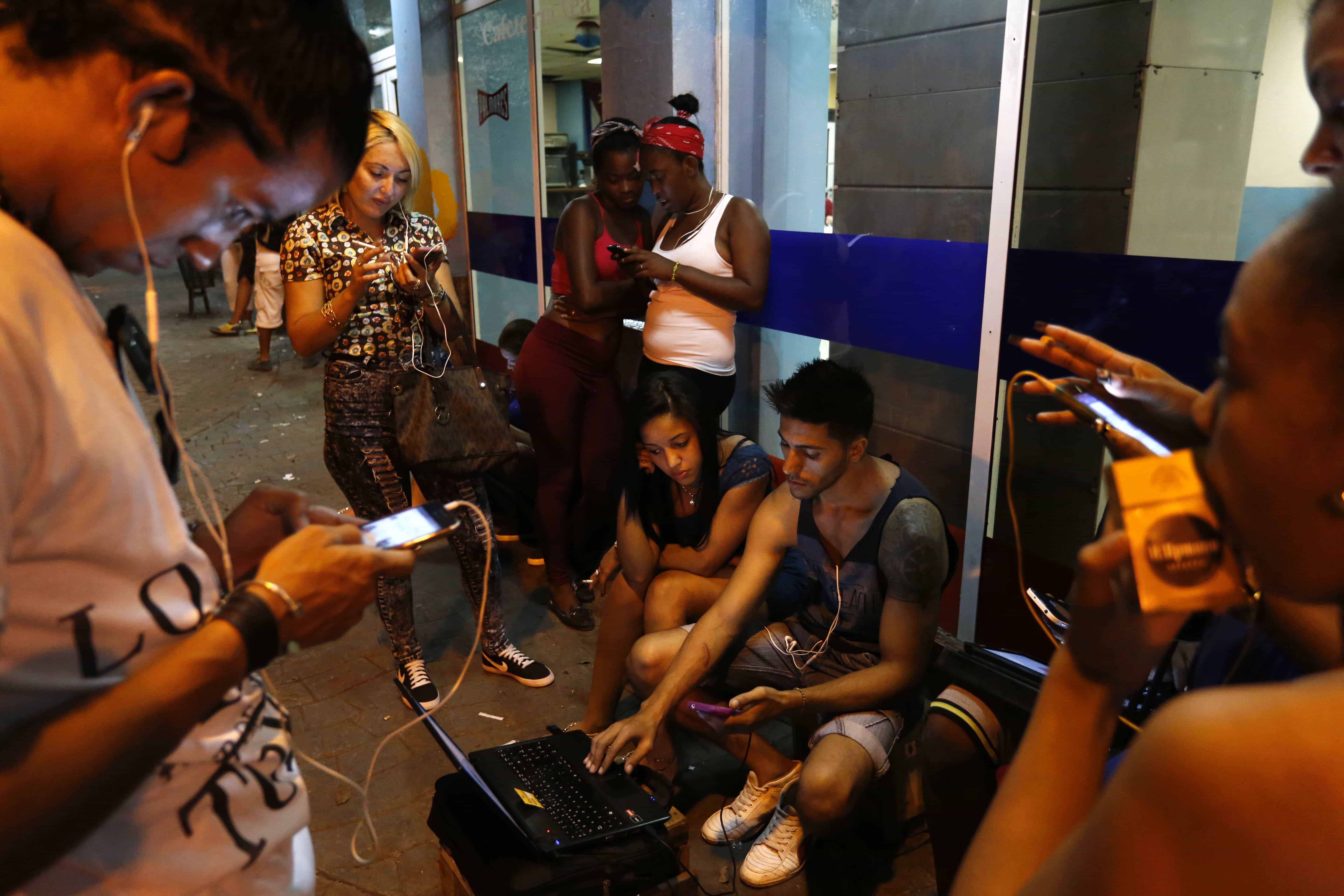When Internet access is limited by infrastructure, cost, or government censorship, the ability of citizens to learn and share ideas and take charge of their own development is correspondingly limited. In Cuba, that’s where El Paquete comes in.
The Internet, which many describe as an enabler of human rights, “boosts economic, social and political development, and contributes to the progress of humankind as a whole”. Some argue that Internet access itself should now be considered a human right.
Whether it’s a right or a rights enabler, it can be easy to take for granted in a country where almost all households have access, where banks, schools and the government provide services online, and where it’s fast and easy to connect to international news and people around the globe. But when your access is limited by infrastructure, cost, or government censorship, the ability of citizens to learn and share ideas and take charge of their own development is correspondingly limited. In Cuba, that’s where El Paquete comes in.
The Cuban problem
Lack of Access
Cuba is one of the least connected countries in the world. Statistics on just how little access there is vary depending on whom you ask. In 2014 the Cuban national statistics body reported that 27% of people had access, but this number reflects those connected to the country’s internal intranet, rather than the Internet. In recent years, non-profit organisations and news outlets have reported that 5% of the population has access at home, while roughly 25% are users of the Internet.
To address low access rates, in 2011 an underwater cable was installed connecting the island to Venezuela and raising hopes of widespread access. Two years later, in 2013, blogger Yoani Sánchez noted that Renesys, a U.S. company that monitors Internet activity, reported that the cable was active, before a public announcement had been made. At the end of 2013 access to the cable was made available to citizens, but after the expense of installation and connection, it seems the project has had little impact.
Expensive Access
Until the summer of 2015, Internet access was only permitted for government officials and tourists, but since then the Castro government has opened over 30 public Wi-Fi spots and Cubans now converge near cell towers to get the best connection. Still, the fee of approximately US$2 per hour of access is out of reach for many Cubans, who, on average earn US$20 a month. Access in government-run Internet cafes is even more expensive, running between US$6 and US$10 per hour.
Restricted Access
The Internet available to most Cubans is not the unrestricted version. According to the Inter American Press Association’s 2016 report on Cuba, censorship of websites within the country is ongoing, especially of blogs and news sites critical of the government, like Sánchez’s 14ymedio.com. So even if people can afford some sort of device, get themselves to a WiFi hot spot and pay for access, what they are getting is only a fraction of what is really out there.
A Cuban Solution
For these people, and even those without access, there is El Paquete – a creative solution for people determined to connect, share and learn via the World Wide Web. But what is it?
El Paquete (“the package”) is a parcel of content that would otherwise be inaccessible to the average Cuban. It arrives in Cuba every Tuesday and quickly gets shared throughout the country with people waiting for the latest TV episodes, foreign news, ebooks, music, computer programs and apps.
The creators of El Paquete and its delivery method are not exactly public knowledge. The people who put it together are unknown, as are the handful of people with high-speed connections who are thought to download it onto portable hard drives, ready for it to be passed from person to person. Because of the generally slow Internet connection on the island, another theory suggests the content is physically delivered from the US. Either way, El Paquete contains neither pornography nor anti-government content, leading yet others to speculate that the Cuban government may even be involved in its production.
El Paquete contains a copy of Spanish-language Wikipedia and a marketplace called Revolico, similar to Craigslist, where people buy and sell all manner of things, including cut-rate Internet access. Revolico is one of the sites blocked within Cuba, so users download it from the El Paquete and then either use it offline to see what is on offer, or, if they have Internet access, browse it like a regular site.
While El Paquete includes blocked content, most businesses, including smartphone repair shops, sell it for less that US$1 and many even openly advertise it. Other people have a subscription and receive the paquete via hand delivery.
It’s a creative work-around, and gives Cubans access to more media than they would otherwise have. But it doesn’t come close to replacing the need for free and open access to the uncensored web.
Change is coming?
Before the end of 2014, when the US and Cuba declared steps towards normalizing their relationship, the US embargo made it very difficult for Cuba to purchase and maintain Internet infrastructure. It also made it impossible for US companies to invest in tech in Cuba. Combined with a desire to control information, access, and perception of government policies, it was a perfect storm for terrible Internet access.
While the embargo is still in place, President Obama is making it a bit easier for US companies to work with Cuban state-owned companies. Google is exploring possibilities to bring more Internet access to the island, starting by bringing Chromebooks to a museum in Havana where people will be able to connect to government-owned Internet. In early 2016 the Cuban government announced plans to make residential broadband Internet access a reality for two neighbourhoods in Havana.
Even with these advances, many questions remain. Will the Cuban government allow full, free, unfettered access? Will Cubans even want access provided in large part by the US, after revelations of NSA bulk data collection? For now, it looks like Cubans will continue to create patchwork solutions to overcome Internet censorship and other barriers to access.

The new Google technology center which will offer free Internet access in Havana, CubaAP Photo/Ramon Espinosa
Erin Woycik is the IFEX Section Editor for the Americas.
